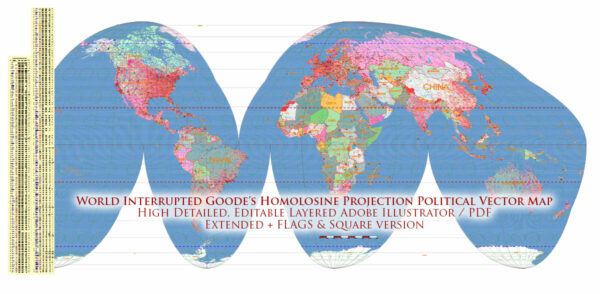Goode’s Homolosine projection, also known as Goode’s Projection, is a pseudocylindrical, equal-area map projection. It was designed by John Paul Goode in 1923 as an attempt to minimize the distortion in the representation of the world’s surface. The projection accomplishes this by breaking up the Earth’s surface into several segments and projecting them individually.
Here’s an approximate representation of the world using Goode’s Homolosine projection:
[Unfortunately, I cannot display images or maps directly as a text-based AI, but you can easily find maps using Goode’s Homolosine projection by searching for them on the internet or by using mapping software or websites that support this projection.]
To find maps that use Goode’s Homolosine projection, you can use online mapping tools or search for images specifically tagged with this projection. It’s a relatively uncommon projection for world maps, but it does offer a unique way of representing the Earth’s surface with reduced distortion, especially in terms of area.



 Author: Kirill Shrayber, Ph.D.
Author: Kirill Shrayber, Ph.D.